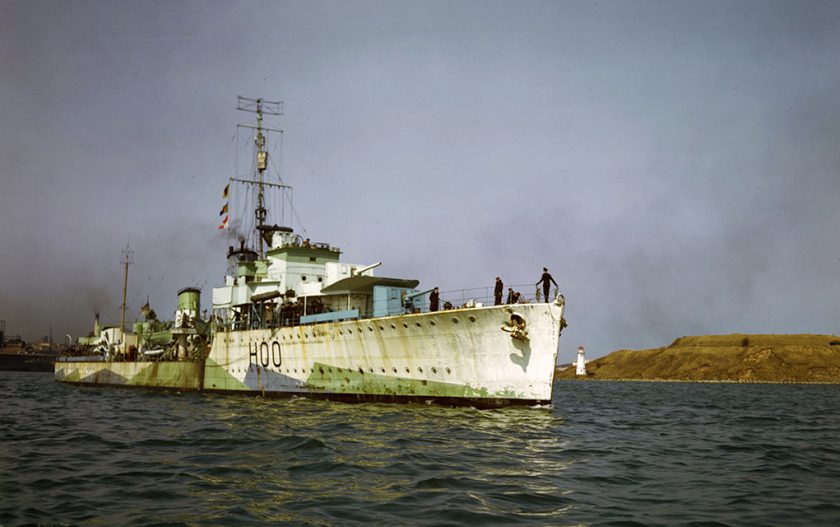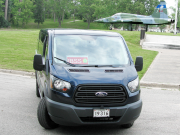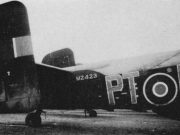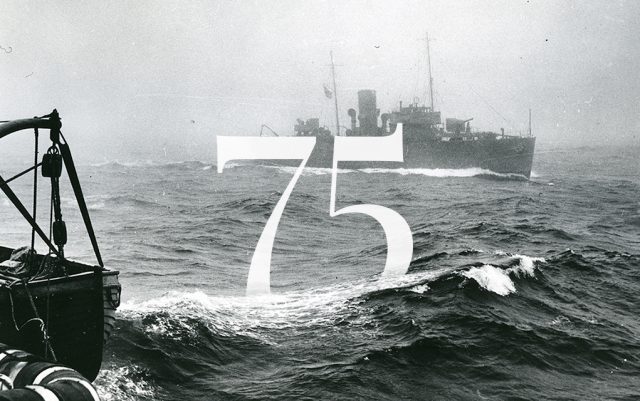
The Battle of the Atlantic (BOA) was the longest continuous battle of the Second World War, and one that Canada played a central role in. The battle began on the opening day of the war in September 1939, and ended almost 6 years later with Germany’s surrender in May 1945.
The Battle of the Atlantic was the struggle between the Allied and German forces for control of the Atlantic Ocean. The Allies needed to keep the vital flow of men and supplies going between North America and Europe, where they could be used in the fighting, while the Germans wanted to cut these supply lines. To do this, German submarines, called U-boats, and other warships prowled the Atlantic Ocean sinking Allied transport ships.
The Battle of the Atlantic brought the war to Canada’s doorstep, with U-boats torpedoing ships within sight of Canada’s East Coast and even in the St. Lawrence River. Canada’s Merchant Navy, along with the Royal Canadian Navy (RCN) and the Royal Canadian Air Force (RCAF), played a key role in the Allied efforts. East Coast cities soon found themselves involved in the battle, since Allied convoys were frequently leaving busy ports like Halifax and Sydney, Nova Scotia, and St. John’s, Newfoundland, during the war.
Helping the Allies triumph in the Battle of the Atlantic came at a high price. The battle claimed twenty-two RCN ships along with fifty-nine merchant ships. More than 1,600 Merchant Navy personnel from Canada and Newfoundland were killed. Indeed, percentage-wise, their casualty rate was higher than those of any of Canada’s fighting services during the Second World War — one out of every seven Merchant Navy sailors who served was killed or wounded.
The RCN and RCAF also paid a high toll in the Battle of the Atlantic. Most of the 2,000 RCN officers and men who died during the war were killed during the Battle of the Atlantic, as were 752 members of the RCAF. There were also civilian casualties. On October 14, 1942, 136 people died when the ferry SS Caribou was sunk as it crossed from Nova Scotia to Newfoundland.
Allied victory in the Second World War would not have been possible without victory at sea. It would require overcoming great odds, but the courage of the RCN, Merchant Navy and RCAF personnel helped keep the Allied convoys running and the supply lines to Europe open. These brave men and women were some of the more than one million Canadians who served in the cause of peace and freedom during the Second World War.
The RCN will be commemorating the 75th anniversary of the BOA online through Facebook using the hashtags #BOA75 & #BattleoftheAtlantic. Please feel free to add those hashtags to your personal, private commemorative activity if you wish to share it online.
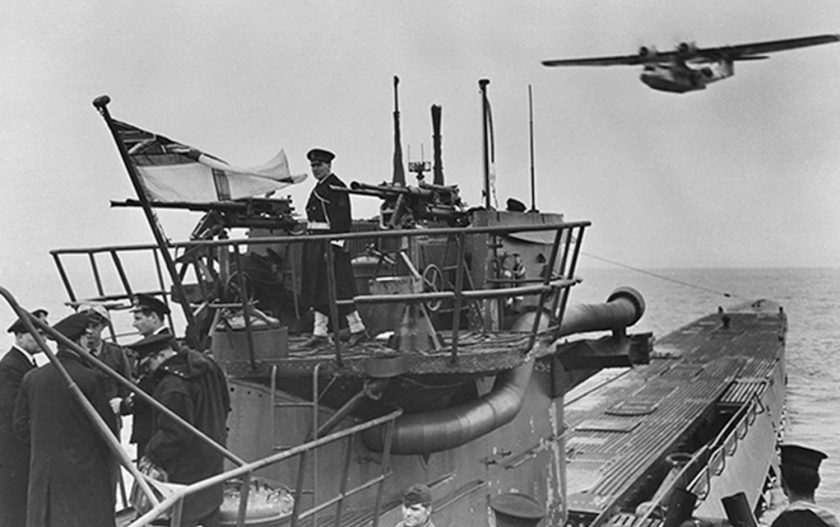
Le 75e anniversaire de la bataille de l’Atlantique
La bataille de l’Atlantique a été la plus longue bataille ininterrompue de la Seconde Guerre mondiale, et le Canada y a joué un rôle central. Elle a débuté le premier jour des hostilités, en septembre 1939, et s’est terminée presque six années plus tard, lorsque les Allemands ont capitulé en mai 1945.
Pendant la Seconde Guerre mondiale, les Alliés et l’Allemagne se sont disputé le contrôle de l’océan Atlantique. On a appelé cette lutte la bataille de l’Atlantique. Pour les Alliés, c’était une question d’assurer le transport ininterrompu d’hommes et d’approvisionnements cruciaux entre l’Amérique du Nord et l’Europe, où ils étaient destinés au combat, tandis que pour les Allemands, le but était de couper ces lignes de ravitaillement. Pour y arriver, des sous-marins allemands appelés U-boote et d’autres bâtiments de guerre patrouillaient l’océan Atlantique dans le but de couler les navires de transport des Alliés.
La bataille de l’Atlantique a apporté la guerre sur le perron du Canada. En effet, les U-boote torpillaient des navires en vue de la côte Est du Canada et même dans le fleuve Saint-Laurent. La marine marchande du Canada, de même que la Marine royale du Canada (MRC) et l’Aviation royale du Canada (ARC), ont joué un rôle crucial dans les efforts des Alliés. Les villes de la côte Est se sont bientôt trouvées elles aussi à participer à la bataille : des convois alliés (des groupes de navires qui traversaient l’Atlantique ensemble sous la protection d’escortes navales) quittaient fréquemment des ports achalandés comme Halifax et Sydney, en Nouvelle-Écosse, et St. John’s, à Terre-Neuve, durant la guerre.
Les Alliés ont payé cher leur victoire dans la bataille de l’Atlantique. Vingt-deux navires de la MRC et cinquante-neuf navires marchands y ont péri. Plus de 1 600 marins marchands du Canada et de Terre-Neuve ont été tués. En termes de pourcentage, leur taux de pertes était supérieur à celui de toutes les autres armes combattantes du Canada durant la Seconde Guerre mondiale — un marin marchand sur sept a été tué ou blessé.
La bataille de l’Atlantique a aussi été très coûteuse pour la MRC et l’ARC. La majorité des 2 000 officiers et marins de la MRC qui ont été tués pendant la guerre ont perdu la vie durant la bataille de l’Atlantique, qui a aussi fauché 752 membres de l’ARC. Il n’y a pas eu que des pertes militaires. En effet, le 14 octobre 1942, 136 personnes ont perdu la vie lorsque le traversier Caribou a été torpillé durant sa traversée de la Nouvelle-Écosse à Terre-Neuve.
Sans victoire en mer, les Alliés n’auraient jamais gagné la Seconde Guerre mondiale. Il a fallu surmonter bien des épreuves, mais, grâce à leur courage, les membres de la MRC, de la marine marchande et de l’ARC ont permis aux convois alliés de continuer de circuler et aux lignes de ravitaillement de l’Europe de demeurer ouvertes. Ces femmes et ces hommes courageux faisaient partie des plus d’un million de Canadiens qui ont servi la cause de la paix et de la liberté pendant la Seconde Guerre mondiale.
La MRC commémorera aussi le 75e anniversaire de la bataille de l’Atlantique en ligne sur Facebook au moyen des mots-clics #BatAtl75 et #BatailledelAtlantique. N’hésitez pas à ajouter ces mots-clics à votre activité personnelle et privée de commémoration si vous voulez la partager en ligne.
